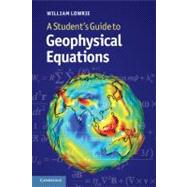
Note: Supplemental materials are not guaranteed with Rental or Used book purchases.
Purchase Benefits
What is included with this book?
| Preface | p. xi |
| Acknowledgments | p. xiii |
| Mathematical background | p. 1 |
| Cartesian and spherical coordinates | p. 1 |
| Complex numbers | p. 1 |
| Vector relationships | p. 4 |
| Matrices and tensors | p. 8 |
| Conservative force, field, and potential | p. 17 |
| The divergence theorem (Gauss's theorem) | p. 18 |
| The curl theorem (Stokes' theorem) | p. 20 |
| Poisson's equation | p. 23 |
| Laplace's equation | p. 26 |
| Power series | p. 28 |
| Leibniz's rule | p. 32 |
| Legendre polynomials | p. 32 |
| The Legendre differential equation | p. 34 |
| Rodrigues' formula | p. 41 |
| Associated Legendre polynomials | p. 43 |
| Spherical harmonic functions | p. 49 |
| Fourier series, Fourier integrals, and Fourier transforms | p. 52 |
| Further reading | p. 58 |
| Gravitation | p. 59 |
| Gravitational acceleration and potential | p. 59 |
| Kepler's laws of planetary motion | p. 60 |
| Gravitational acceleration and the potential of a solid sphere | p. 66 |
| Laplace's equation in spherical polar coordinates | p. 69 |
| MacCullagh's formula for the gravitational potential | p. 74 |
| Furhter reading | p. 85 |
| Gravity | p. 86 |
| The ellipticity of the Earth's figure | p. 86 |
| The geopotential | p. 88 |
| The equipotential surface of gravity | p. 91 |
| Gravity on the reference spheroid | p. 96 |
| Geocentric and geographic latitude | p. 102 |
| The geoid | p. 106 |
| Further reading | p. 115 |
| The tides | p. 116 |
| Origin of the lunar tide-raising forces | p. 116 |
| Tidal potential of the Moon | p. 119 |
| Love's numbers and the tidal deformation | p. 124 |
| Tidal friction and deceleration of terrestrial and lunar rotations | p. 130 |
| Further reading | p. 136 |
| Earth's rotation | p. 137 |
| Motion in a rotating coordinate system | p. 138 |
| The Coriolis and Eotvos effects | p. 140 |
| Precession and forced nutation of Earth's rotation axis | p. 142 |
| The free, Eulerian nutation of a rigid Earth | p. 155 |
| The Chandler wobble | p. 157 |
| Further reading | p. 169 |
| Earth's heat | p. 170 |
| Energy and entropy | p. 171 |
| Thermodynamic potentials and Maxwell's relations | p. 172 |
| The melting-temperature gradient in the core | p. 176 |
| The adiabatic temperature gradient in the core | p. 178 |
| The Gruneisen parameter | p. 179 |
| Heat flow | p. 182 |
| Further reading | p. 197 |
| Geomagnetism | p. 198 |
| The dipole magnetic field and potential | p. 198 |
| Potential of the geomagnetic field | p. 200 |
| The Earth's dipole magnetic field | p. 205 |
| Secular variation | p. 213 |
| Power spectrum of the internal field | p. 214 |
| The origin of the internal field | p. 217 |
| Further reading | p. 225 |
| Foundations of seismology | p. 227 |
| Elastic deformation | p. 227 |
| Stress | p. 228 |
| Strain | p. 233 |
| Perfectly elastic stress-strain relationships | p. 239 |
| The seismic wave equation | p. 244 |
| Solutions of the wave equation | p. 252 |
| Three-dimensional propagation of plane P- and S-waves | p. 254 |
| Further reading | p. 258 |
| Magneti poles, the dipole field, and current loops | p. 259 |
| Maxwell's equations of elecromagnetism | p. 265 |
| References | p. 276 |
| Index | p. 278 |
| Table of Contents provided by Ingram. All Rights Reserved. |
The New copy of this book will include any supplemental materials advertised. Please check the title of the book to determine if it should include any access cards, study guides, lab manuals, CDs, etc.
The Used, Rental and eBook copies of this book are not guaranteed to include any supplemental materials. Typically, only the book itself is included. This is true even if the title states it includes any access cards, study guides, lab manuals, CDs, etc.